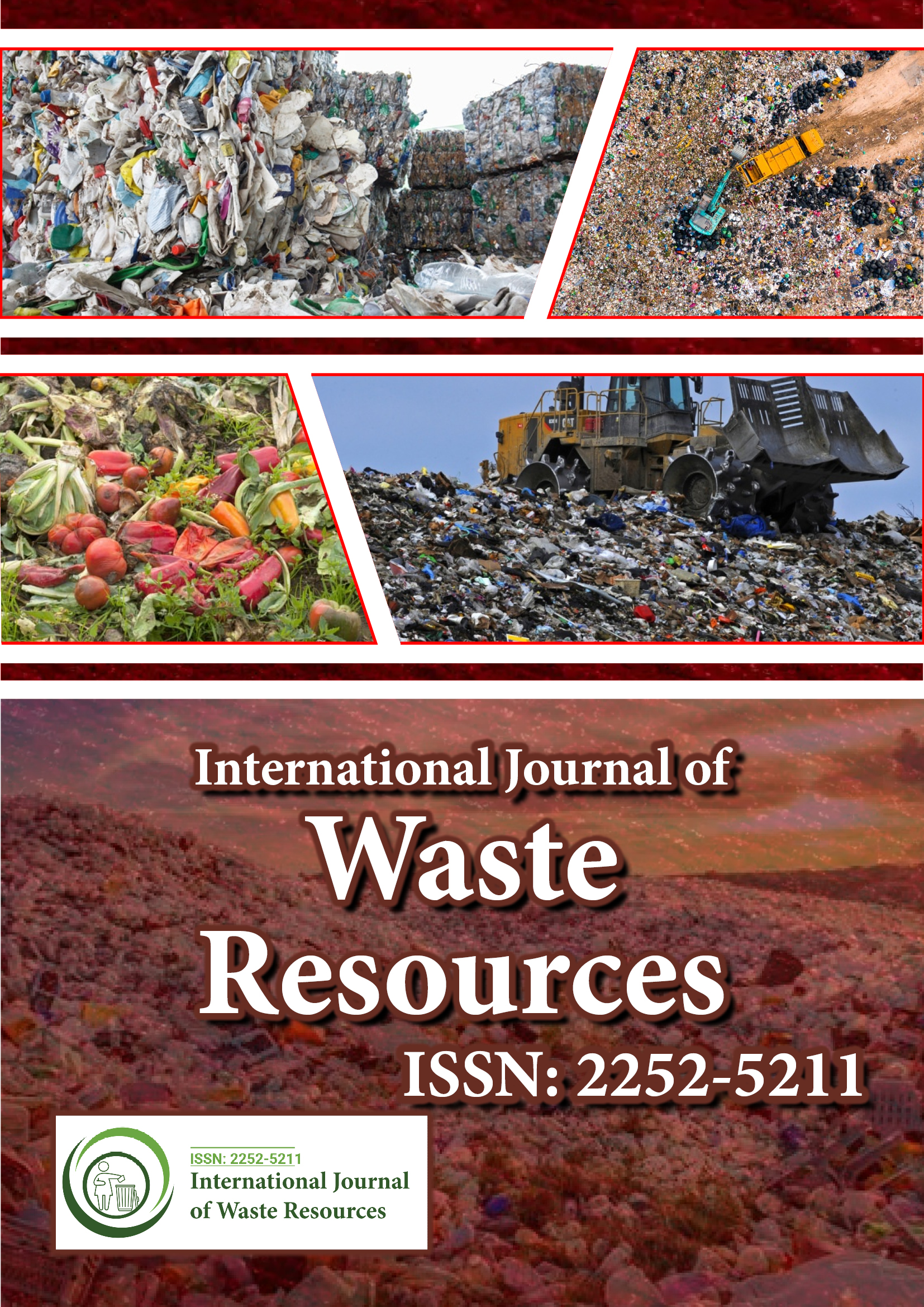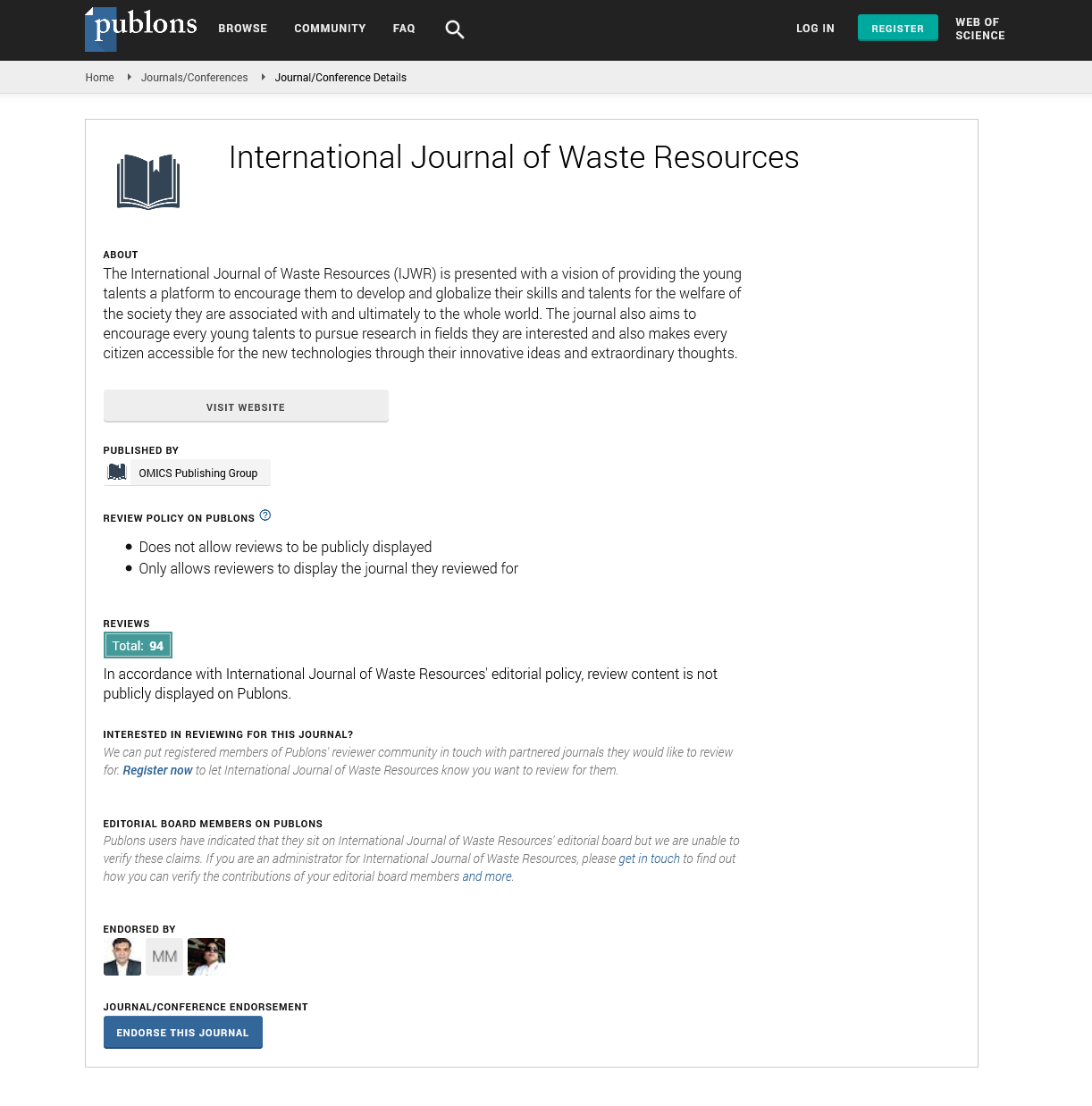Indexed In
- Open J Gate
- The Global Impact Factor (GIF)
- Open Archive Initiative
- VieSearch
- International Society of Universal Research in Sciences
- China National Knowledge Infrastructure (CNKI)
- CiteFactor
- Scimago
- Ulrich's Periodicals Directory
- Electronic Journals Library
- RefSeek
- Directory of Research Journal Indexing (DRJI)
- Hamdard University
- EBSCO A-Z
- Publons
- Google Scholar
Useful Links
Share This Page
Journal Flyer

Open Access Journals
- Agri and Aquaculture
- Biochemistry
- Bioinformatics & Systems Biology
- Business & Management
- Chemistry
- Clinical Sciences
- Engineering
- Food & Nutrition
- General Science
- Genetics & Molecular Biology
- Immunology & Microbiology
- Medical Sciences
- Neuroscience & Psychology
- Nursing & Health Care
- Pharmaceutical Sciences
Commentary Article - (2024) Volume 14, Issue 3
Effective Pharmaceutical Waste Management for Environmental Safety
Alexia Paxton*Received: 28-Aug-2024, Manuscript No. IJWR-24-27479; Editor assigned: 30-Aug-2024, Pre QC No. IJWR-24-27479(PQ); Reviewed: 13-Sep-2024, QC No. IJWR-24-27479; Revised: 20-Sep-2024, Manuscript No. IJWR-24-27479(R); Published: 27-Sep-2024, DOI: 10.35248/2252-5211.24.14.593
Description
Pharmaceutical waste management is a critical issue for healthcare providers, regulatory authorities and environmental advocates alike. Mismanagement of pharmaceutical waste poses significant risks to public health, environmental integrity and community welfare. As pharmaceutical consumption rises globally, effective waste management strategies are essential to address the volume and toxicity of waste produced. This explores current pharmaceutical waste management practices, their challenges and emerging trends aimed at creating safer, more sustainable management systems. The primary methods for managing pharmaceutical waste include segregation, incineration and landfilling. These processes aim to prevent pharmaceutical residues from entering water systems, soil and air. Hospitals, pharmacies and manufacturing facilities often employ a set of regulatory-guided practices, focusing on safety and environmental standards. However, each method comes with limitations and challenges. Segregation is a foundational step in pharmaceutical waste management. Pharmaceuticals are classified based on their potential risk, such as hazardous and non-hazardous waste. Facilities use color-coded bins and labels to separate general waste from pharmaceutical waste, ensuring proper disposal routes are followed. Although classification aids in containment, gaps in understanding waste categories can lead to cross contamination and ineffective waste handling. Incineration is commonly used for the disposal of hazardous pharmaceuticals. It effectively neutralizes most Active Pharmaceutical Ingredients (APIs) by burning waste at high temperatures, which prevents harmful chemicals from leaching into the environment. Despite its efficiency, incineration can release harmful emissions like dioxins and furans, necessitating advanced air filtration systems. This method also requires significant energy inputs, which adds to operational costs and environmental impact. Non-hazardous pharmaceutical waste is often sent to landfills or disposed of through deep well injection. Inadequate containment at landfill sites can lead to pharmaceutical compounds leaching into the soil and groundwater, posing ecological risks. In regions with poor landfill management standards, the risks of contamination are heightened, particularly in areas with weak infrastructure for hazardous waste containment. Take-back programs have been increasingly promoted as a means to safely dispose of unused or expired medications. By allowing consumers to return unused pharmaceuticals to designated facilities, these programs help prevent improper disposal, such as flushing medications down the toilet, which can lead to water contamination. Despite the benefits, take-back programs face challenges related to funding, accessibility and public awareness. Pharmaceutical waste management is governed by an array of national and international regulations. However, inconsistencies between regulatory frameworks can complicate compliance, particularly for multinational corporations and healthcare providers. Some countries lack comprehensive guidelines for specific pharmaceutical waste types, while others have stringent policies that increase disposal costs. Proper pharmaceutical waste handling requires staff training to ensure compliance with waste segregation, labeling and disposal procedures. In many facilities, however, there is a shortage of adequately trained personnel, leading to misclassification and improper disposal practices. Regular training programs and educational campaigns are necessary to raise awareness and reinforce the importance of adhering to best practices. Effective pharmaceutical waste management can be costly, especially for healthcare providers and facilities with limited budgets. Regulatory compliance demands significant financial resources for specialized equipment, transportation and disposal facilities. Smaller hospitals and pharmacies may struggle to implement compliant systems, leading to a reliance on less sustainable practices. Incineration and landfilling can lead to environmental degradation.
Conclusion
Pharmaceuticals often contain toxic compounds that resist degradation and their accumulation in ecosystems can harm wildlife and disrupt aquatic habitats. Persistent pharmaceutical residues, such as antibiotics and hormone-based medications, can interfere with reproductive cycles in fish and birds, contributing to ecosystem imbalances. Technological advancements in waste treatment, including Advanced Oxidation Processes (AOPs), membrane bioreactors and nanofiltration, provide more effective means of neutralizing pharmaceutical residues. These methods use chemical or physical processes to break down APIs, preventing their release into the environment. Investment in these technologies could significantly reduce the ecological footprint of pharmaceutical waste management. Additionally, global collaboration can drive innovation in waste treatment technologies and create more efficient systems for managing pharmaceutical waste worldwide.
Citation: Paxton A (2024). Effective Pharmaceutical Waste Management for Environmental Safety. Int J Waste Resour. 14:593.
Copyright: © Paxton A. This is an open-access article distributed under the terms of the Creative Commons Attribution License, which permits unrestricted use, distribution, and reproduction in any medium, provided the original author and source are credited.

